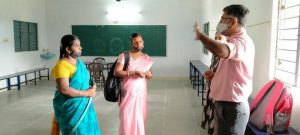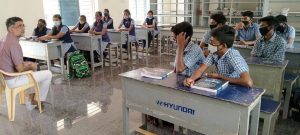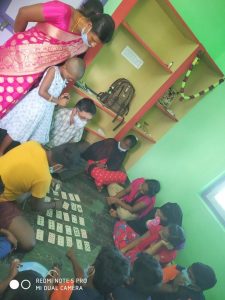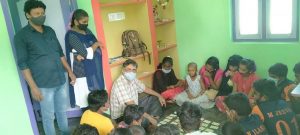Asha Chennai in partnership with IITM Pravartak launche Rural Technology Centres to reach technology to rural children without access to technology in the 9th to 12th standard.
IITM Pravartak and Asha envisioned the starting of Rural Technology Centres to spread the knowledge of technology and benefits that come from it to rural areas of Tamilnadu. See details of our thoughts in our RTC Page. We have started two of them on Jan 1st. They have been started at Kanakamma Chathram and Seethanjeri in Thiruvallur District. They are intended to serve primarily the 9th to 12th Std children in these areas. Here are photos from the Rural Technology Centres.
The Centres
We wanted to open the centres close to higher secondary schools so that the students will be able to attend courses in our centres in the evening after their school hours. Based on the availability of our own existing teachers, we selected Kanakamma Chathram and Seethanjeri in Thiruvallur District as the places for the first two centres. Both of these places are small shopping centres for nearby villages and are well connected by bus. We were able to find suitable places to rent at both these places. At Kanakamma Chathram, it was a place on the 2nd floor in the busy commercial area of the village. It is just a couple of hundred meters from the school. At Seethanjeri it is a quite house that belongs to the family of one of our teachers. It is right adjoining the school’s vast grounds and just a couple of hundred meters from the shopping area. There is a gate to enter the school next to the house as well. Since this has a full compound we hope we can also use it for other things like mini-school, library etc. Actually we have already started running a mini-school from that building. There is a nice covered portico area in the compound. We are using that for our mini-school.
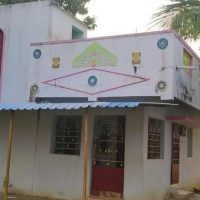
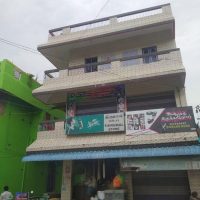
Teachers Visit the Schools
After the holidays from Dec 24th to Jan 2nd, the school did not reopen for classes 1 to 8. They remained open for classes 9 to 12. With the surging Omicron wave, we were aware that schools were likely to close for classes 9 to 12 also in a week or two. Therefore, we decided to use the time to get to know the schools well. During the time when the RTCs were getting ready, our teachers visited the higher secondary schools.
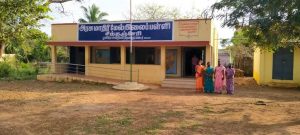
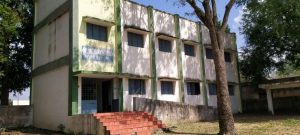
While the primary focus of the teachers were the higher secondary schools right next door (ie. Govt Higher Secondary Schools at Kanakamma Chathram and Seethanjeri rest), they also visited the other higher secondary schools nearby. The Kanakamma Chathram teachers visited the higher secondary school at Arcot Kuppam. Seethanjeri teachers visited the higher secondary schools at Pondhavakkam and Uthukottai.
The teachers used the time to tell the students and the teachers about Asha and the Pravartak Asha RTCs. They also understood the level of the children. The level of the students was even worse than what we expected. Children didn’t know a thing about computers. Even computer science students haven’t had any time on computers. They didn’t even know what is programming and when asked what are languages like C/C++ or Java, they asked whether these are languages to talk to people from other states or countries!
The two main schools we were serving cannot be more different in some respect. The government higher secondary school in Kanakamma Chathram had very little control. Children were just roaming about. On the flip side, this meant that we could get time with the children very easily! They also had lots of extra rooms. They gave us an alternate computer room with a couple of computers and a projector! It looks like these do not work. We have to repair them. The school at Seethanjeri was very different. The children were very well behaved and organised. I was impressed that every one of them was masked when I visited them. The school had just enough rooms for the classes and adequate number of teachers. Therefore, they couldn’t allocate classes for our teachers. The children were also constrained in interacting with us and it took a bit of an effort on the part of our teachers to get them to open up.
Both the schools had big computer rooms with 20+ computers. These were being used for children to take online tests on all subjects. So far this year they do not seem to have been used for teaching computer science to the children. Both of them had the Computer Science subject for 11th and 12th but not Computer Applications subject. Both the schools had some students who had come from schools that Asha was serving. Esp. in the case of Kanakamma Chathram, there were several students from the Ramanjeri middle school. They all knew Asha and had good recollection of the computer science they had learnt there.
As our teachers did not have enough computers to teach the children, they used many of the unplugged activities to make the children aware of computer science concepts. They also, to the extent possible, showed them some of the things that they will be learning in the RTCs. The children were uniformly very excited by the opportunity to learn computer science.
I visited the schools on January 6th and 7th. I talked to the HMs at both the schools and the support from both the schools was very good. I also interacted with some of the children. I could also see for myself the state of the computer science students. It was a joy to see smiling faces of familiar children from Ramanjeri greeting me at Kanakamma Chathiram.
Getting the RTCs ready
We purchased furnitures for the RTC centres. We purchased 2 rotating chairs for the teachers and 10 fixed ones for the students. We also bought 3 4’ x 2’ tables for the computers and 2 smaller 2.5’ x 1.5’ tables for the teachers. We further purchased a bureau to store things safely.
To start with we equipped the RTCs with old computers that we already had. Just before the Corona outbreak, we had received 100 computers each from Ford and Hyundai Glovis. We couldn’t deliver the computers to some of the schools. These were still lying with us. We could equip both the RTCs with 8 computers each. Electrical work was also required to provide good Earthing and provide enough plug points for the computers. Further lights and fans were provided in every room in the centres.
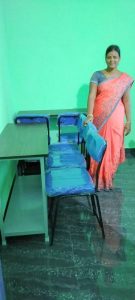
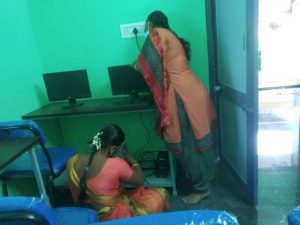
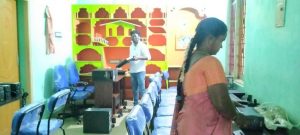
At Seethanjeri the teachers also took a couple of days before Pongal to go around the villages of Seethanjeri and Ammambakkam to spread the information about the RTC. There was good reception to it from the local population.
RTCs in Use
The schools closed down for Pongal and did not open after that even for classes 9 to 12. We decided to open the RTCs. As the computers and furniture were ready by this time, we could start taking classes. We started that informally as we were still not sure about the number of children etc. To our pleasant surprise the children started coming in large numbers. More than 50 children are coming to the Kanakamma Chathram RTC and more than 30 children to the Seethanjeri RTC.
Children have been broken into batches and the students use the computers in pairs. We are showing them LibreOffice, TuxPaint etc. If there are more students and there isn’t enough space at the computers, one of the teachers does some unplugged activities with them.

Based on our assessment of the students’ levels, we are planning to start two courses as follows:
Basic Digital Literacy:
This will teach the children basics of how to use a computer. It will teach them text document, spread-sheet and presentations using LibreOffice. It will teach them how the Window multi-tasking Windowing environment works. It will also teach them the basics of operating systems, files, folders etc. Finally it will also introduce them to the Internet and the various tools available on the Internet like web browsing, search, Wikipedia, emails, social media etc.
Basics of Programming :
It will teach them programming through unplugged activities as well as on the computer. On computer it will introduce them to the idea through Blockly games and take that further with various programming exercises with Code.org tools as well as Scratch.
These two courses are essentially condensed versions of our 6th to 8th std curriculum. We hope to finish each of these courses in 3 months’ time if the children are doing 3 classes of 2 hours each. This includes 2 months of instruction followed by one month of project work. Once the schools reopen, this will reduce to 2 classes of 1.5 hours in which case the course will take most of the rest of the academic year. We will be offering the programming course only to those children who are already comfortable using the computers.
When the schools are closed, we plan to run the centers for 5 days a week with 3 2-hour slots on each day. We can handle 5 batches with 3 slots a week. Given the number of computers and space available, we can handle about 15 students per batch. Once the schools reopen, we will move the digital literacy course to the school and start the students coming to the centres on the programming course. If there aren’t enough number of students, we will allow these students as well as younger students to come and use the computers to play educational games, see other educational contents etc.
As the students are still coming to know about the RTCs and the strength is continuing to increase, we decided to start the formal batches on Jan 31st.




